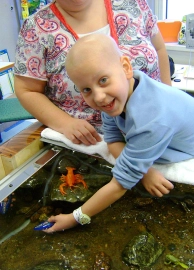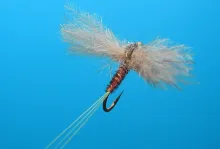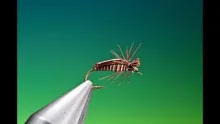It might sound crazy, but you can actually help hospitalized kids by tying flies for them! Tie flies in support for this science project for kids.
"Our mission is to engage hospitalized children with the wonders of science through meaningful learning experiences and to promote healing and hope through positive connections with nature."
This is the mission of the project Healing and Hope Through Science, which is a program run by the North Carolina Botanical Garden at UNC-Chapel Hill. The project does in all simplicity help kids in hospitals get through their illness through science projects, which are both fun and educating.
The project caters to kids at Duke Children's Hospital and UNC Children's Hospital in North Carolina in the US, and arranges activities on location as well as field trips for kids who can leave the hospitals.
I was contacted by Program Director and Educator Katie Stoudemire who asked me if I could provide some life like aquatic insects for the "creek", which is a small, open aquarium that the children can play with and at the same time learn about streams and ponds. She had seen our articles with naturalistic insects and nymphs.
I myself am not the best tyer of realistic flies, but I immediately thought of you - the GFF army! There are numerous great tyers amongst you, people I know and people I don't know, and there's bound to be a whole lot of you who can tie realistic flies for Katie's project.
I'm sure that all contributions will be welcome
I'm sure that all contributions will be welcome, but as you can see from the pictures the obvious options are animals like:
Insect nymphs - caddis, mayflies and stoneflies, damsels - these all lend themselves well to naturalistic imitations, and while some are a bit more difficult to tie, they are all within reach of any tyer.
Adult insects - the same as above, but add to that beetles, ants, hoppers and flying insects in general.
Aquatic animals like crayfish, scuds and even small baitfish - you can also see a plastic frog in one of the images, and I'm sure a good looking frog would bring out a smile.
There are a few things you need to consider when tying for this project:
Naturalism - the flies need to look like live insects. Not perfect imitations of specific species with all details, but emphasis on looks, and not fantasy creations either. This is a science project, and a cased caddis larva should be easily recognizable as a cased caddis larva and a beetle should look like a beetle and not a space monster.
Size - don't go too small, and maybe even tie "larger-than-life". These flies are supposed to be handled and played with by kids. No size 16's and 20's!
Durability - make sure your flies can take a rough treatment. Most flies are pretty robust, but the finest details will break or get mangled. Wire, monofilament and foam wins over quills, barbs and hair.
No hook point! - It should go without saying, but even though we tie on hooks, it's very important that we cut off the point and make sure there are no sharp stubs or cutting wires on the flies when the kids get them.
And tie up a bunch while you're at it. Kids break things and flies will disappear, so if you tie a handful of extra flies, you will ensure that the project will be able to use them for a longer time.
I have volunteered to be the contact, and if you are interested in contributing, please contact me with your idea and I will coordinate with Katie.
- Log in to post comments












